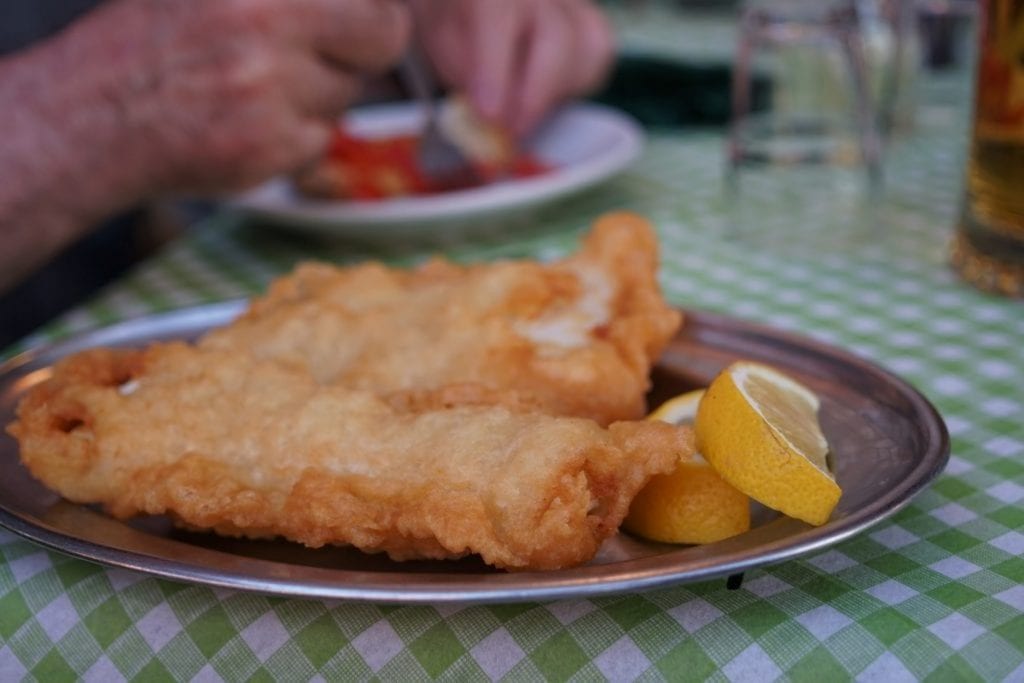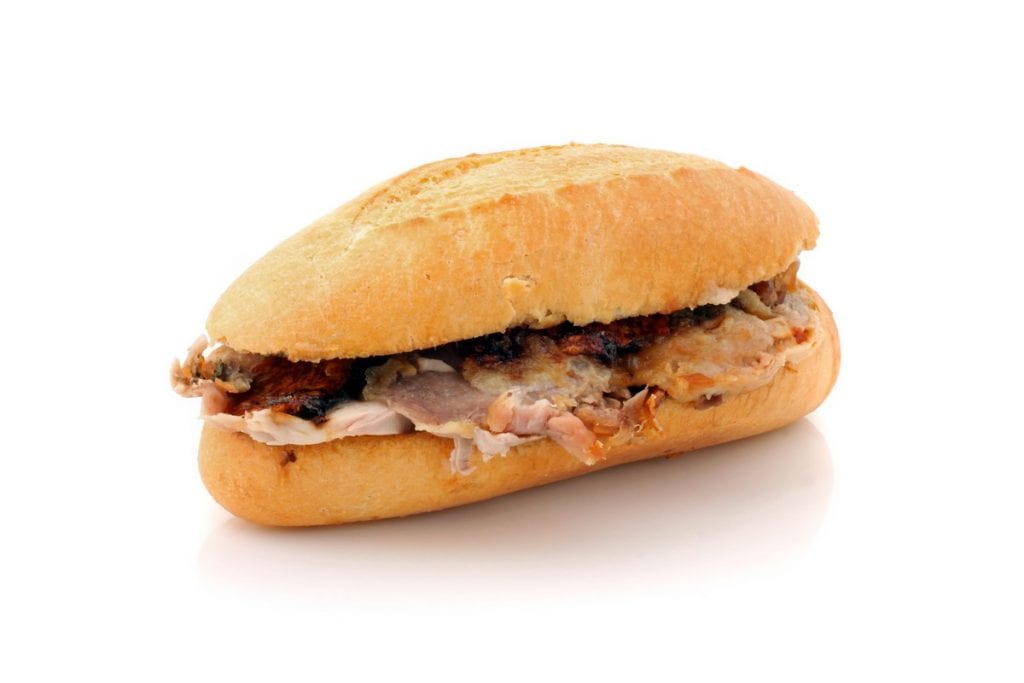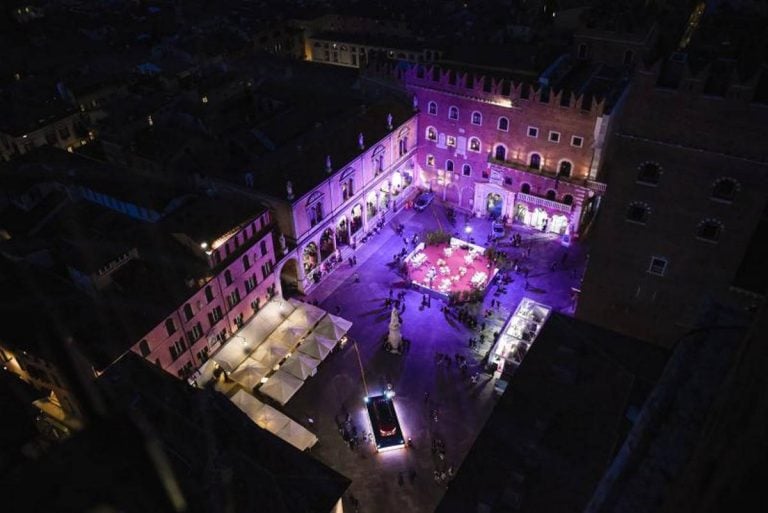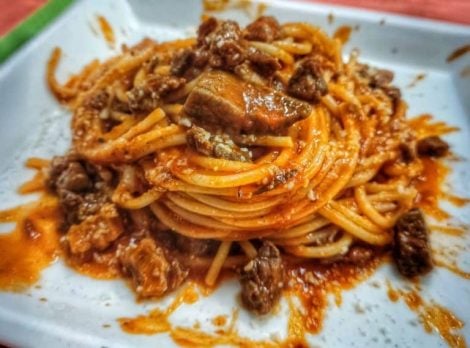Be it for the mild and generous climate, or the beauty of the historic alleys where it's ideal to get lost, but eating while walking around the city is a deeply rooted habit in the Romans, who can rely on a series of practical and simple products to enjoy while walking. Pizza by the slice, for example, street food par excellence, or supplì, a rice croquette with a stringy, tasty and irresistible hunger breaker hors d'oeuvre. From sweet to savoury, here are the traditional street foods to taste in Rome.

Typical street food of Rome
Battered cod fillet
A specialty resulting from the encounter between Jewish and Roman traditions: cod fillets are an institution in Rome, prepared on Christmas Eve but actually available year round. The fillet is dipped in batter (sparkling water and flour) and then fried in boiling oil: the result is a crunchy, golden product with a melt-in-the-mouth and succulent filling. Usually ordered as an appetizer, there are also those who choose to consume it as street food, walking through the streets of the center.

Porchetta sandwich
Product of the Castelli Romani based on roast pork, which since 2011 enjoys the recognition of protected geographical indication. Porchetta is a great classic of Lazio cuisine, inevitable in the fraschette in the hilly Castelli area, places once dedicated to pouring new wine with food brought from home, today more similar to classic taverns. It can be tasted on its own, but the most traditional way is on the go, stuffed inside a sandwich.
Pizza by the slice
We have to wait until the end of the 1950s for the phenomenon of pizza baked in a tin to begin to spread in the capital. The first to bake it were the most innovative pizza makers, looking for a greater profit and an intelligent way to recover leftover dough. Over the years, pizza by the slice, baked in a pan or in oblong slabs and fed in the oven with a peel, has become one of the most common street foods in the city, but to give an authentic change to this world was - in Rome, Italy and especially abroad - Gabriele Bonci, exceptional master pizza maker who has revolutionised the way of conceiving and approaching white art. A product, therefore, of recent history, but which in a few decades has managed to create a fundamental piece of the Capitoline and - we can now say - national gastronomic tradition. In the past, the pizza cut was rather crunchy, thin, rich in toppings, but today there are many variations of this product, from the rising times to the type of flours, of course, to the fillings. Separate chapter: "pizza e mortazza," that is plain pizza sliced open and stuffed with mortadella. A classic Roman snack.

Supplì
This is a rice croquette with tomato that hides a heart of melted mozzarella inside: the name derives from a distortion of the French term "surprise" (surprise), used by soldiers from across the Alps present in Rome in the 19th century to describe the wonder of product, which contained a “surprise,” the mozzarella filling. From surprise it passed to the Roman interpretation "suprisa", which was then transformed into "supprisa", "supprì" and finally supplì. Originally the rice was seasoned with classic ragù or with chicken gizzards, but more and more frequently there are many delicious variations: vegetable sauces, amatriciana, cacio e pepe and so on.
Trapizzino
The last born among the local street foods, but which has many fans, is the trapizzino, a recent invention by Stefano Callegari, a well-known name in the Roman food scene and beyond. Famous for his pies, his entrepreneurial skills, venues, innovative projects in Italy and abroad, but above all for one of the most delicious and intelligent creations of recent years. A peculiar street food that immediately garnered the enthusiasm of gourmets from all over Italy, and which has now rightfully become part of the essential tastings during a holiday in the Eternal City. Trapizzino is a triangular-shaped pizza pocket crisp on the outside and fluffy on the inside, filled with traditional sauces, from chicken cacciatore to tripe, from tongue with green sauce to meatballs with sauce, from eggplant parmigiana to burrata with anchovies, and much more.
Grattachecca
Emblem of Roman summers, the grattachecca is made with ice "scraped" from a single large block, combined with fruit syrups. The name derives from the verb to grate/scrape and the word "checca" for the bg slabs once used to, before the advent of refrigerators, refrigerate foods. The first kiosks of the "grattacheccari" began to spread through the Trastevere alleys at the beginning of the 20th century, a period in which Romans got into the habit of walking around the city sipping a cool drink, a practice that continues today. A sort of street food to drink, which soon became popular in all neighborhoods and also in the rest of Italy, where it is known as ghiacciata (grattatella in Palermo, grattatella in Naples, grattamarianna in Bari). The custom of manually scraping the ice over time has been somewhat lost in favour of more practical and faster methods such as the use of an electric ice crusher, able to crush the ice into small pieces, to which are then added juices. fruit or syrups.

Maritozzo with cream
The best known variant today is the one with whipped cream, but the historical recipe is that of the Maritozzo quaresimale, smaller size and dark colour, enriched with raisins, pine nuts and candied fruit, one of the few sins of gluttony allowed during the period of Lent fasting. One of the most popular legends maintains that in Roman times these sweet rolls were the typical gift for women from their future husband, (marito in Italian) called with the affectionate nickname “Maritozzo.” In fact, a ring or a gold object was often inserted inside the cake as a token of love. Other stories hold that the Maritozzo was prepared in the shape of a heart, to be then offered by the girls of age to the most handsome young man in the country, who should have married the best cook. In the beginning, however, it was a mixture of flour, eggs, honey, butter and salt, while today it is prepared with flour, water, yeast, sugar, milk and oil.
by Michela Becchi


 Masseto, Churchill, and 30 years in one evening: how an Italian wine legend evolves
Masseto, Churchill, and 30 years in one evening: how an Italian wine legend evolves At Vinitaly and The City, the Gambero Rosso "Vini d'Italia" tasting returns
At Vinitaly and The City, the Gambero Rosso "Vini d'Italia" tasting returns Not just the United States. Here’s the map of the Countries with the highest tariffs on wine
Not just the United States. Here’s the map of the Countries with the highest tariffs on wine At Vinitaly, debut for the wine tourism hall. Focus on NoLo, amphora, and raw wine
At Vinitaly, debut for the wine tourism hall. Focus on NoLo, amphora, and raw wine Stop diluting wine with water. It used to be common practice, but today it’s heresy
Stop diluting wine with water. It used to be common practice, but today it’s heresy






